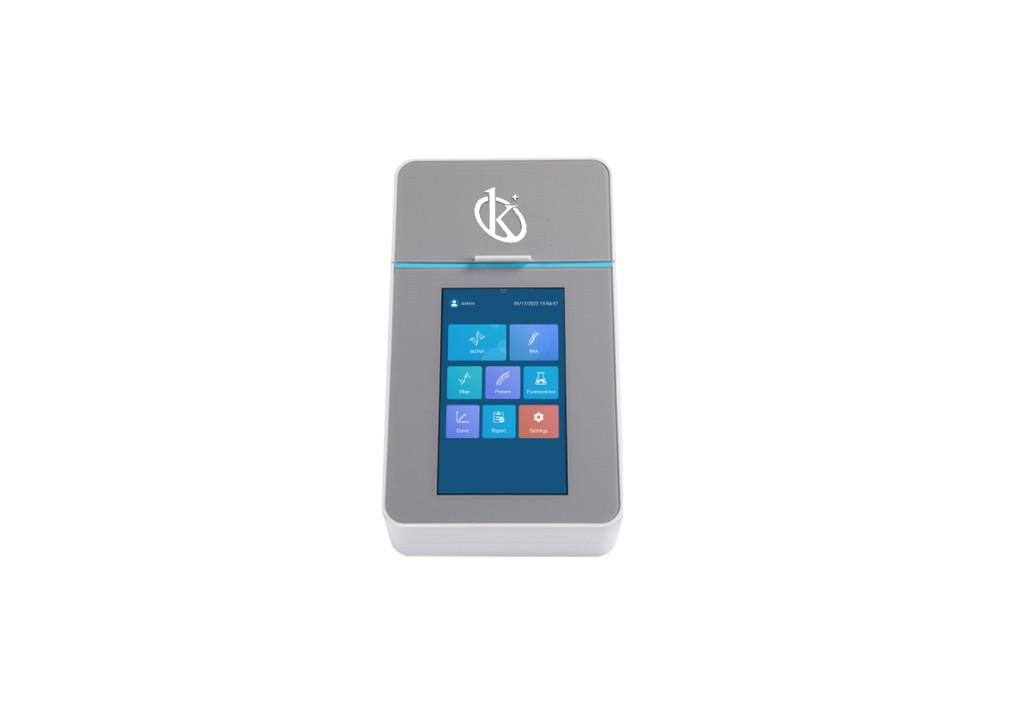A fluorometer is a specialized optical equipment, used in laboratories to measure the fluorescent property or capacity of some biological and mineral samples. These devices are capable of measuring the intensity of the emitted fluorescence and the distribution of the wavelength of the emission spectrum after excitation of a given light spectrum. These parameters are used to determine the presence and quantity of specific molecules in a medium.
Fluorescence is generated when a substance emits visible light and appears to glow after being exposed to some type of radiation, either visible light or other high-energy radiation (X-rays).
Fluorometers can be handheld or tabletop devices. Its sensitivity is adjusted to specific wavelengths of light using filters or monochromators and depending on what is being analyzed. We now find that modern fluorometers have the ability to detect concentrations of fluorescent molecules as small as 1 part per billion. Although fluorescence detection is based on fundamental principles for this process, there are several unique applications and adaptations for these devices. Among its fields of application we find chemistry, biochemistry, molecular biology, dairy industry, medicine and environmental research.
How does a fluorometer work?
As already mentioned, a fluorometer is an instrument that allows the analysis, identification and quantification of substances with molecules capable of fluorescing. There are two types of fluorometers: filter fluorometers and spectrofluorometers. The main difference between them is the way the wavelengths of the incident light are selected. Filter fluorometers employ filters and spectrofluorometers employ monochromators.
In the filter fluorometer, a light source emits light of an excitation wavelength that is relative to the compound to be measured. Fluorometers produce specific product excitation and emission wavelengths through the use of optical filters. The filter blocks other wavelengths and transmits the appropriate wavelengths for the compound in question. Light passes through the sample to be measured, and a certain wavelength is absorbed, while longer wavelength radiation is emitted, and the light that is emitted is measured by a detector.
Spectrofluorometers are equipment with higher resolving power employing monochromators used to tune or step freely over a wide range. They commonly use a double beam, a top beam and a bottom beam. The upper beam passes through a monochromator and passes through the sample. The bottom beam passes through an attenuator and is adjusted to match the fluorescent power emitted by the sample. Subsequently, the light from the fluorescence of the sample and the lower attenuated beam are detected and converted into an electrical signal which is recorded by software.
What do we offer you at Kalstein?
At Kalstein we are manufacturers of laboratory equipment of the highest quality and designed with the best technology, and we present the innovative YR412-A fluorometer, which has the following characteristics:
- Simple: 4.3-inch touch screen, small and easy to use
- Easy measurement in 3 seconds for DNA, RNA and proteins
- High sensitivity: the lowest DNA detection limit is 0.5pg / ul
- Two optical channels: equipped with two fluorescence channels for nucleic acid, protein quantification in one detection
- Linear dynamic range: five orders of magnitude.
- Opening system: you can combine the instrument with the reagent of your choice
- Can save maximum 1,000 data and output data by USB port
- Adapter: 0.5 ml qPCR tube adapter 0.2 ml qPCR tube adapter
For more information, we invite you to take a look at our product catalog HERE

